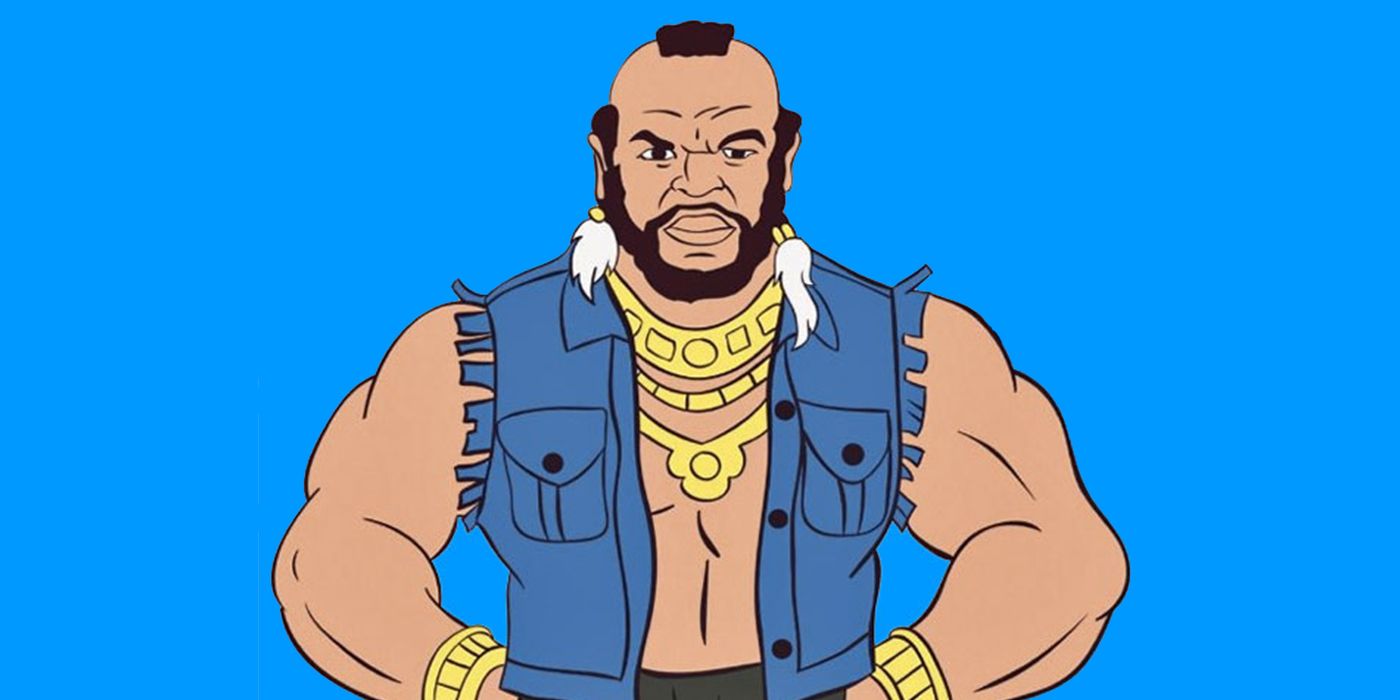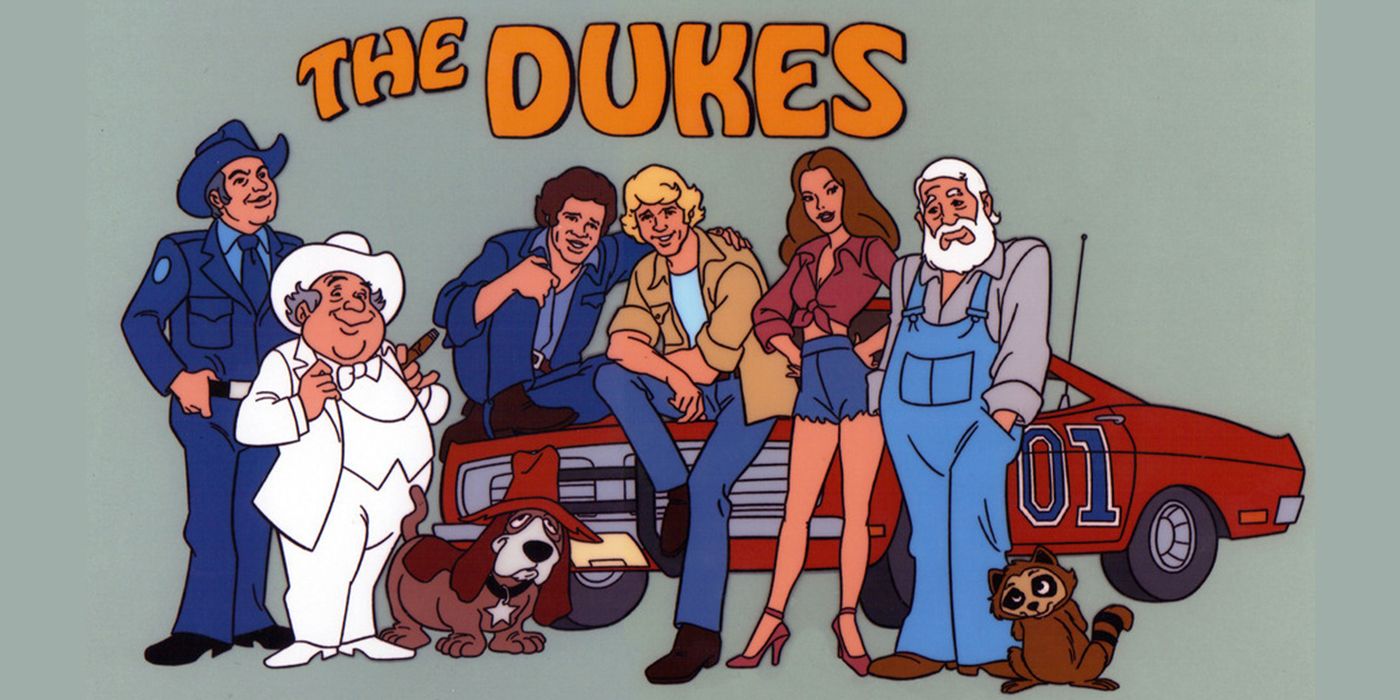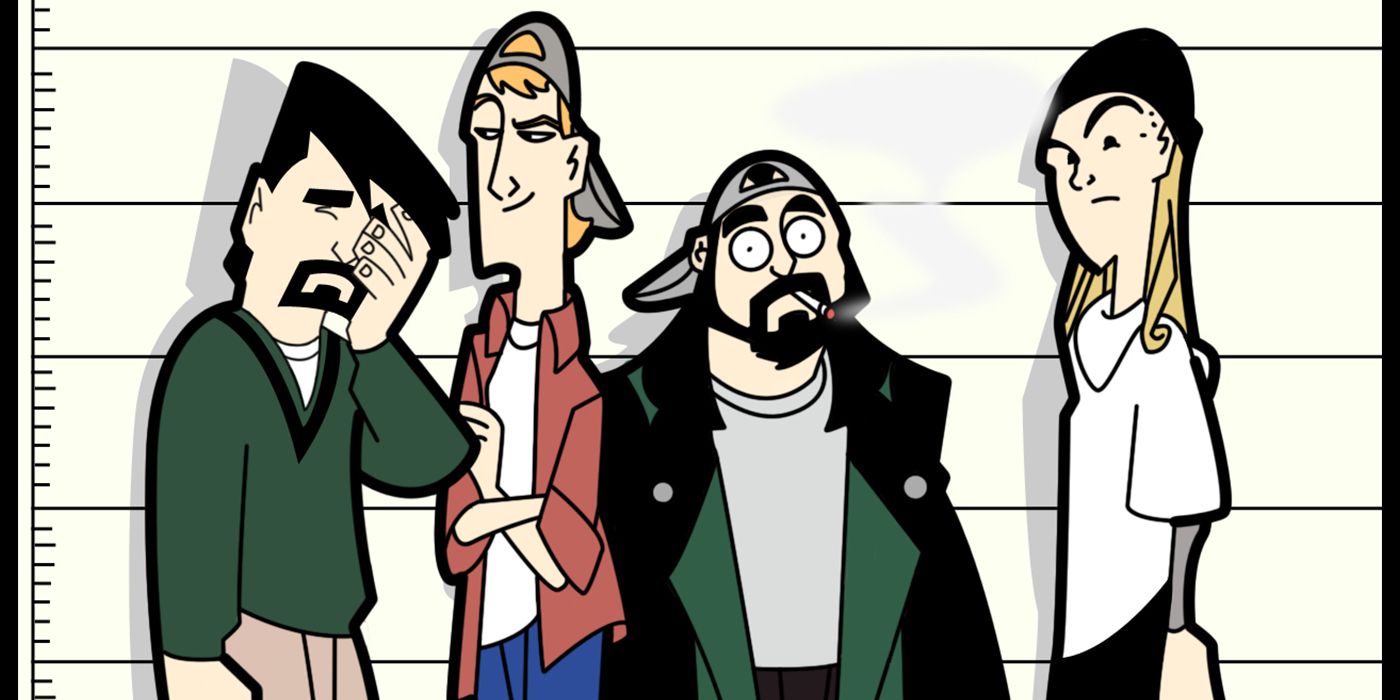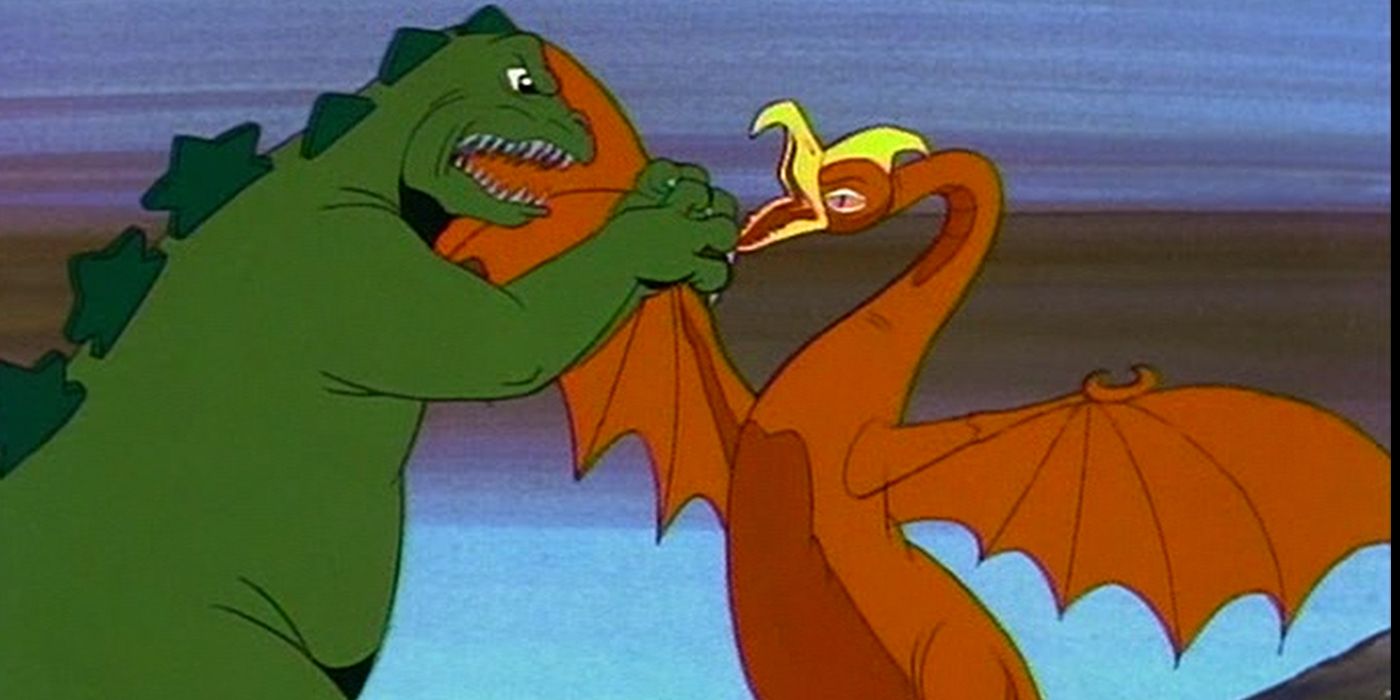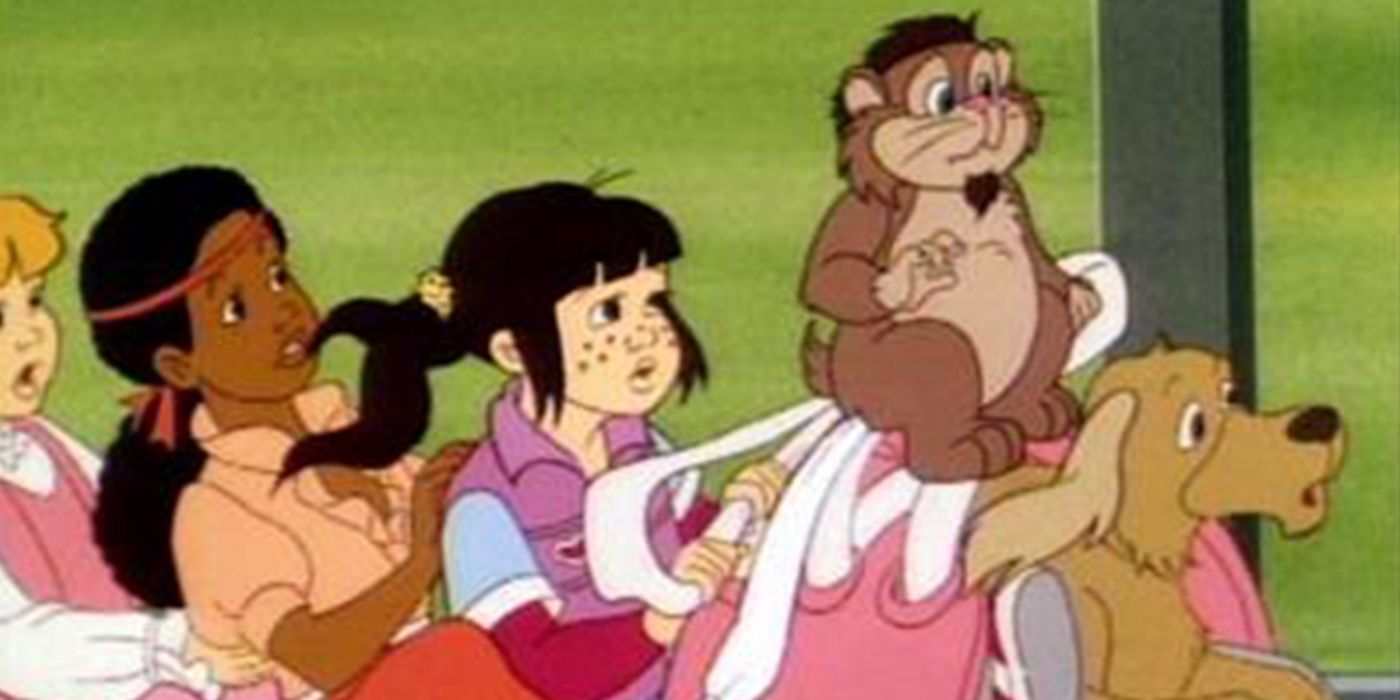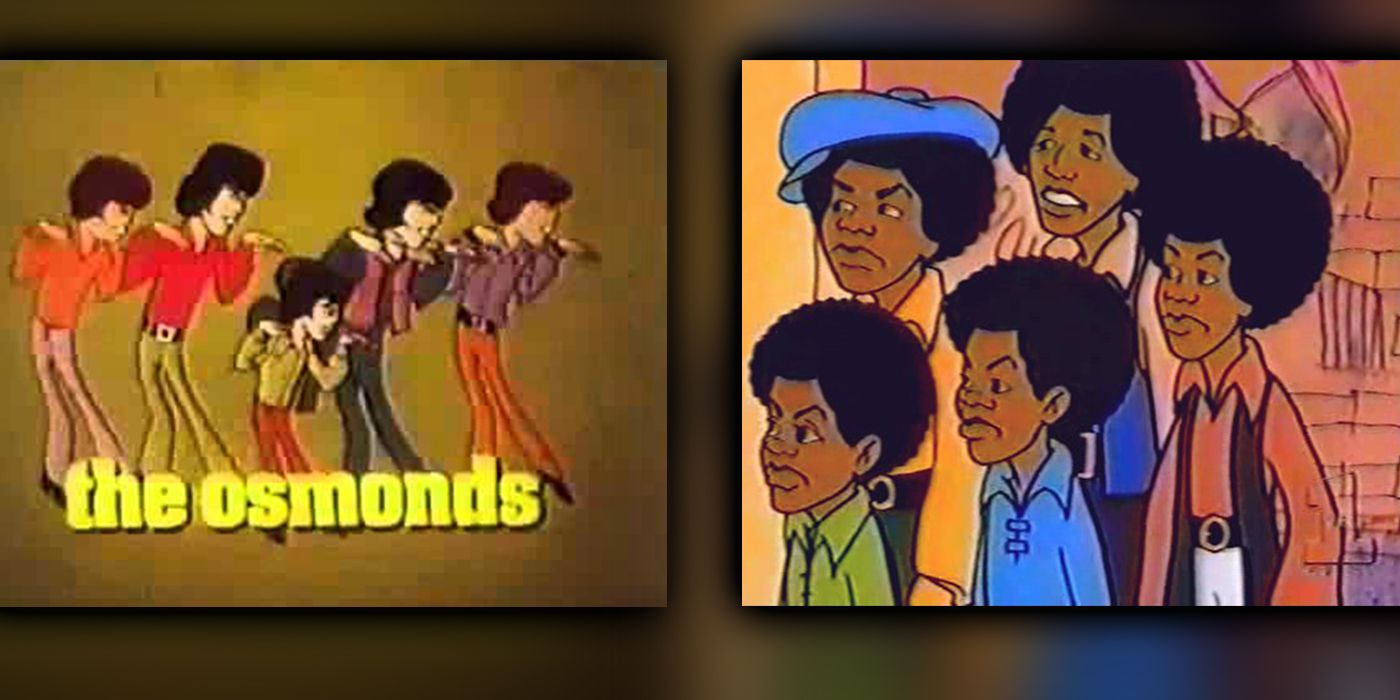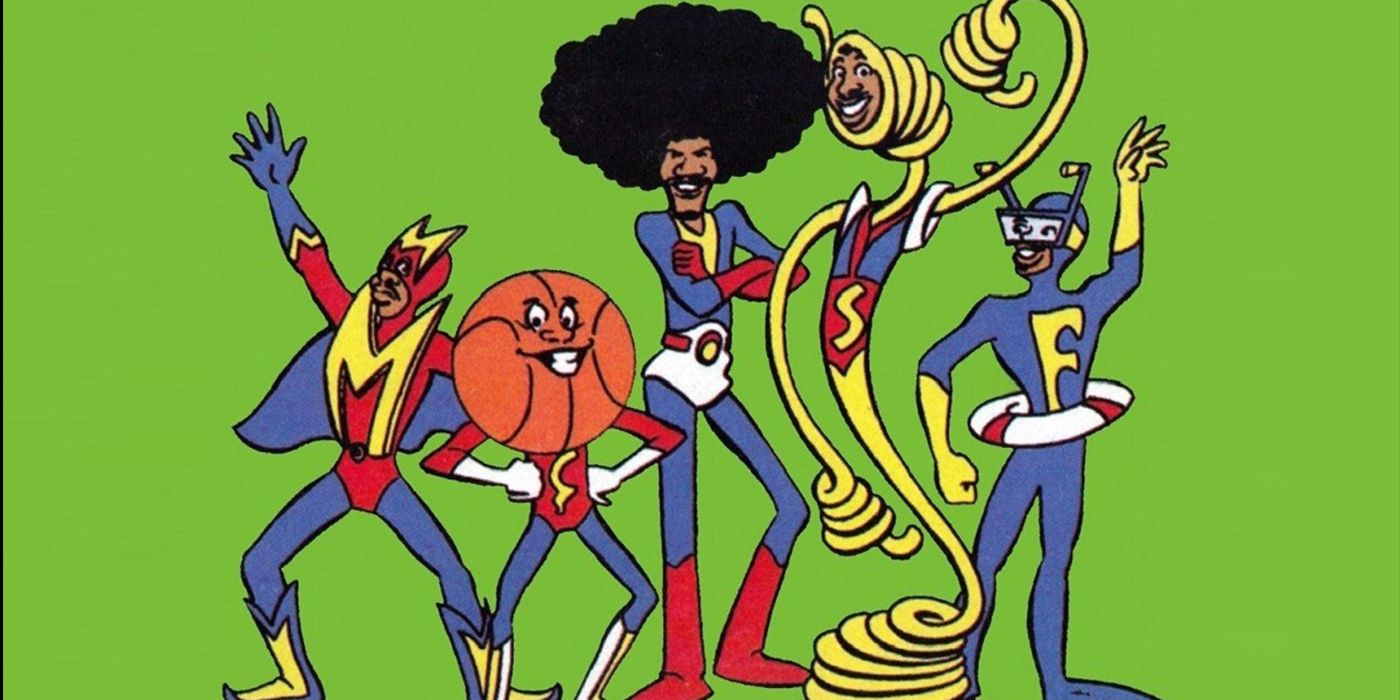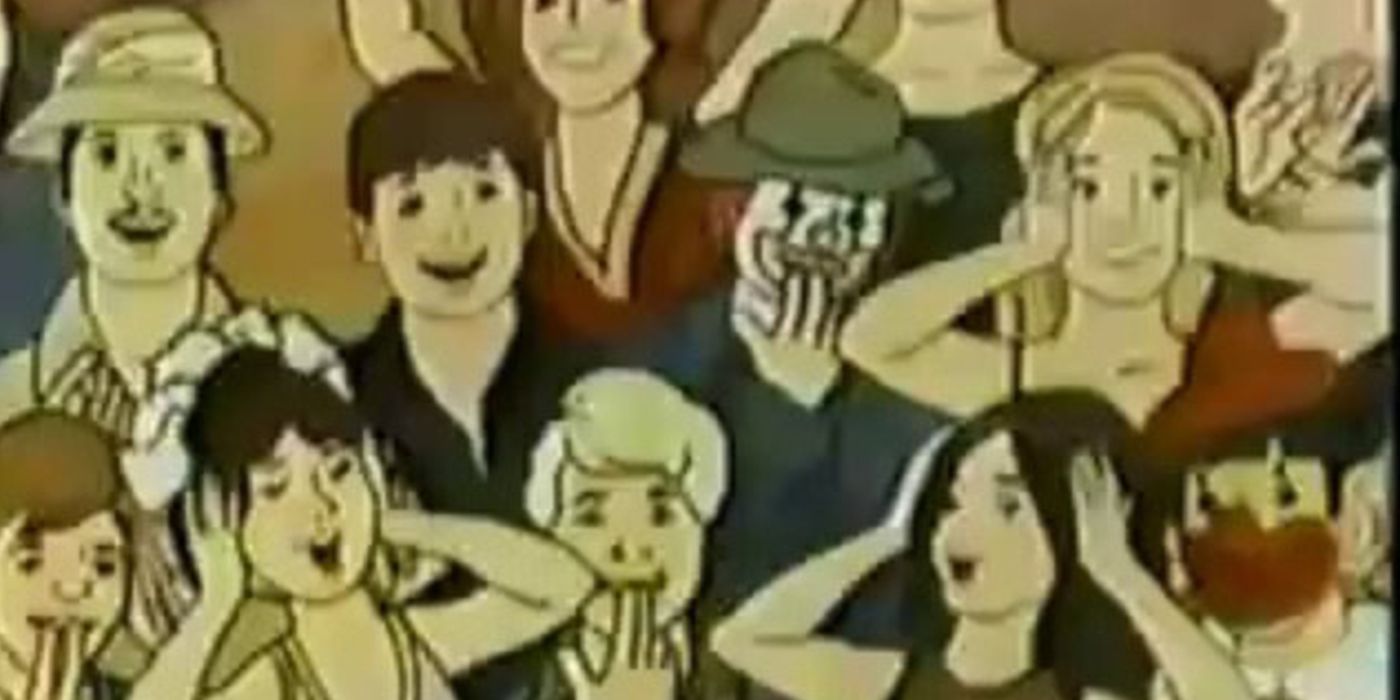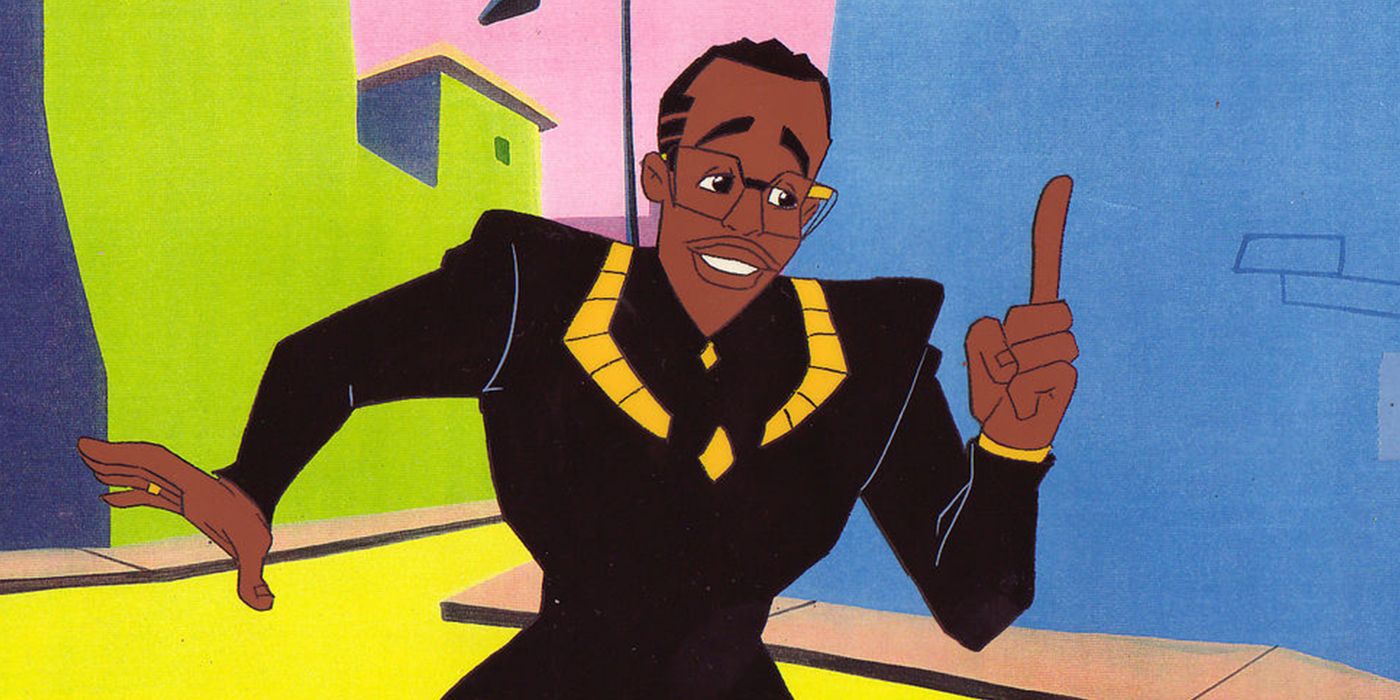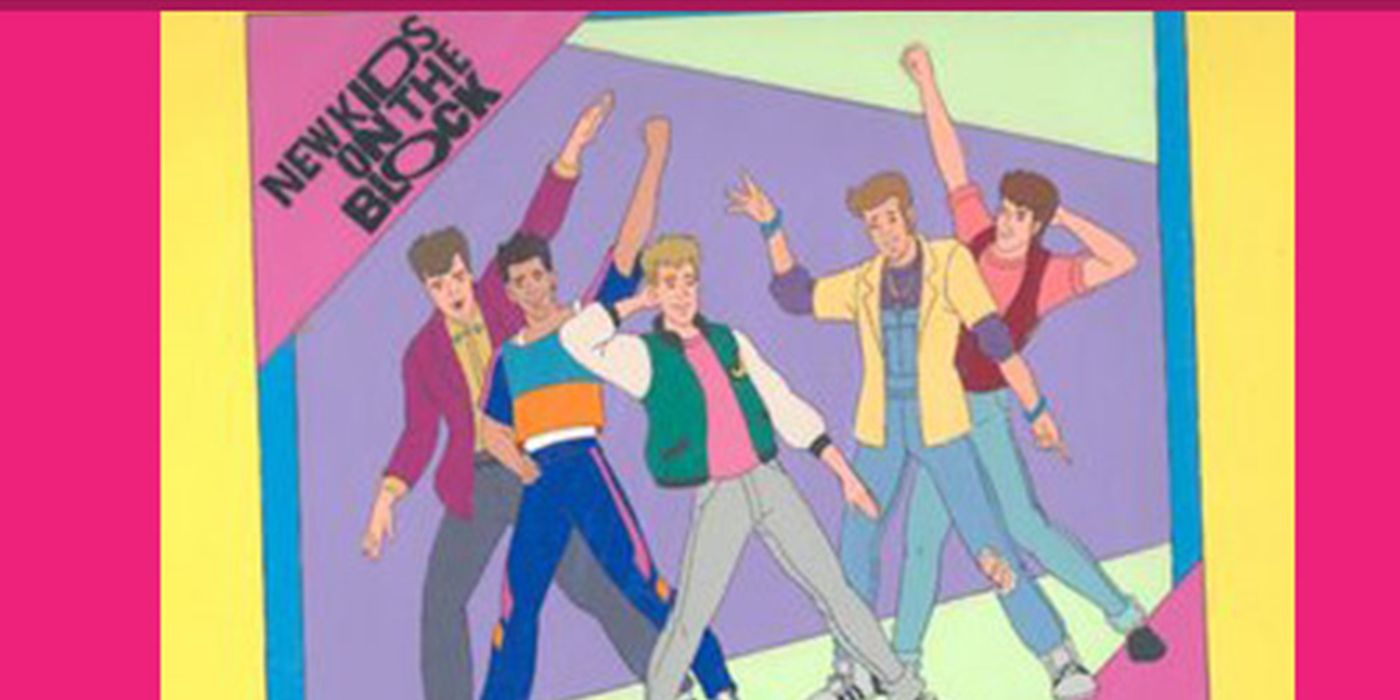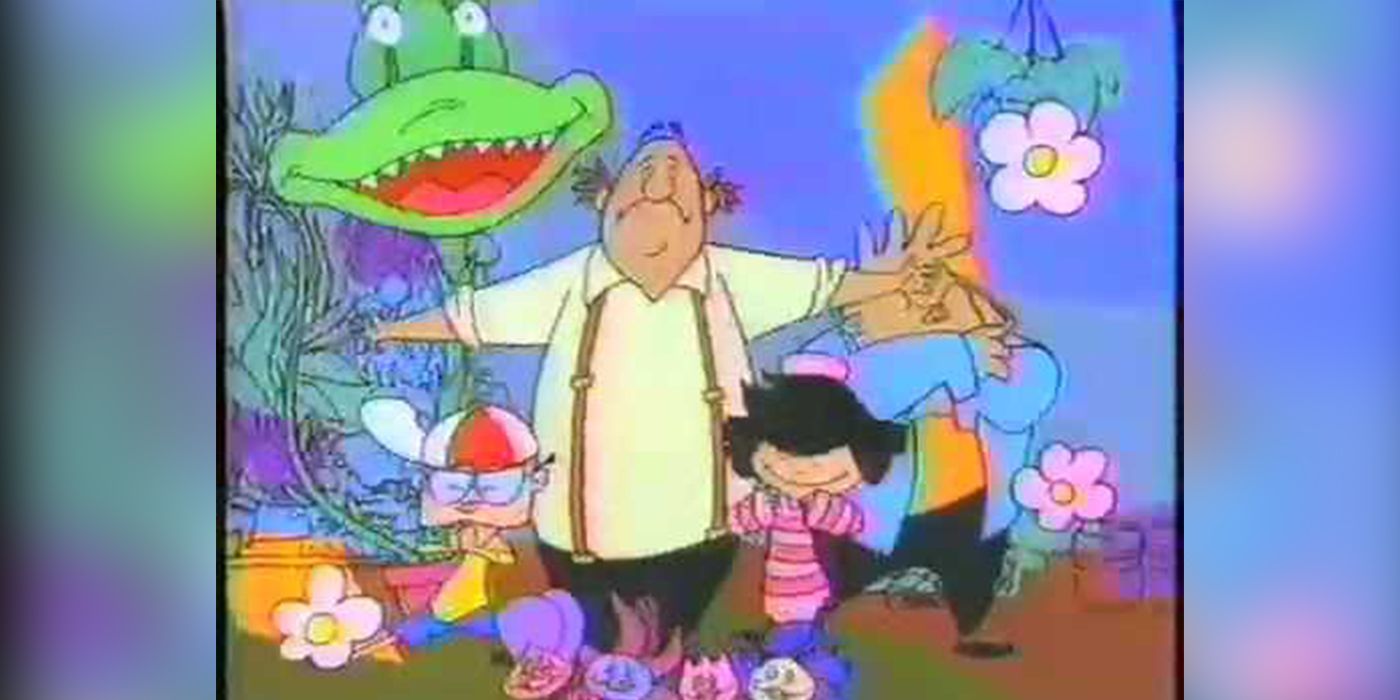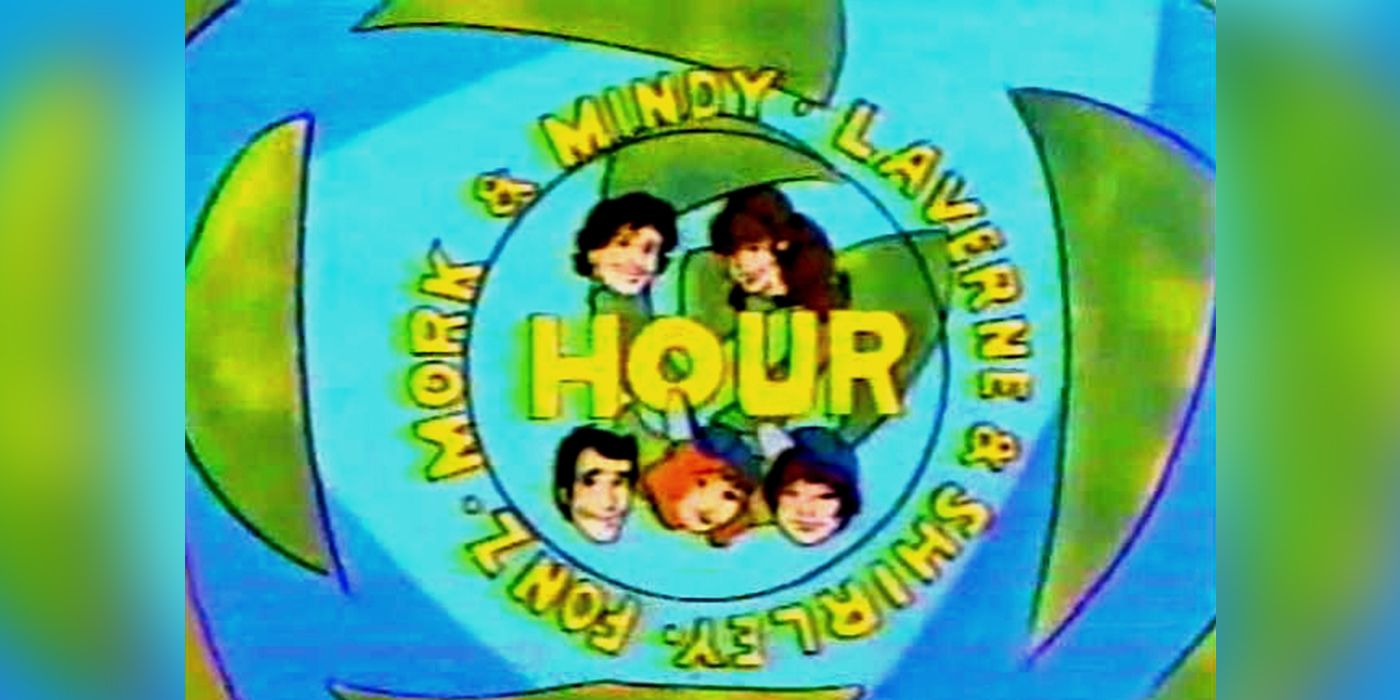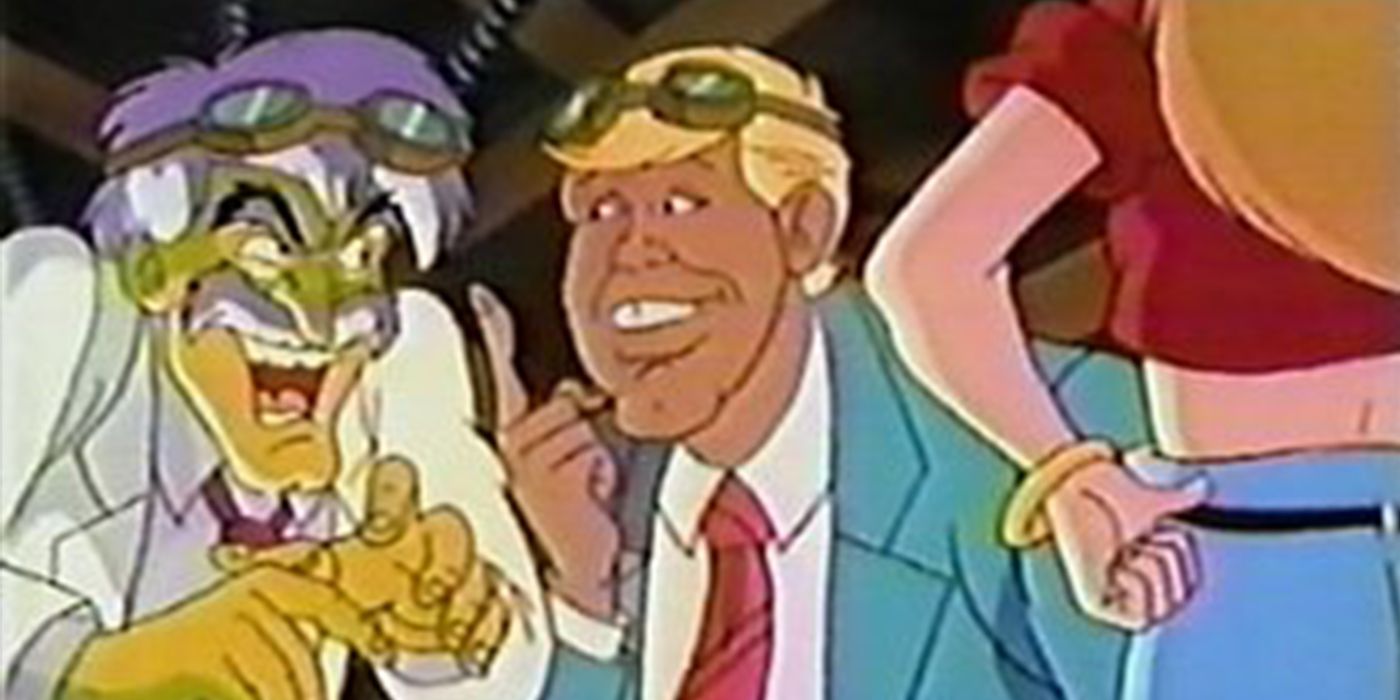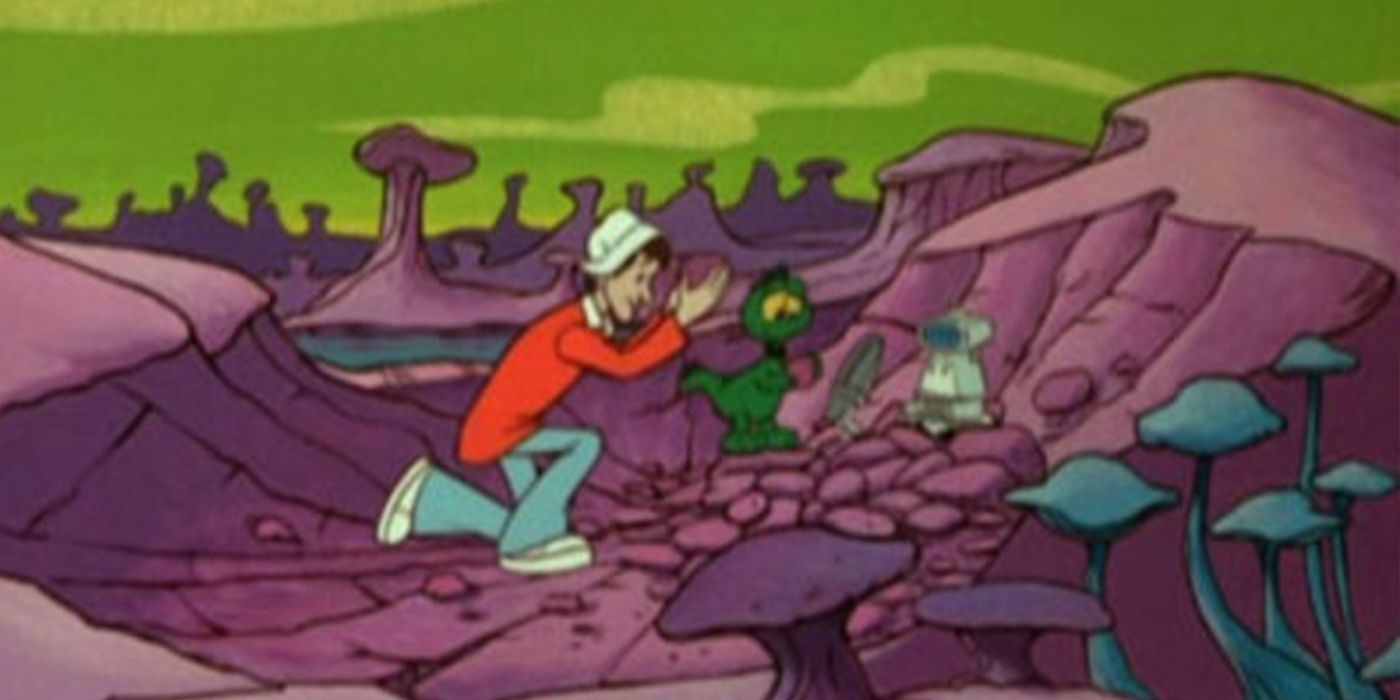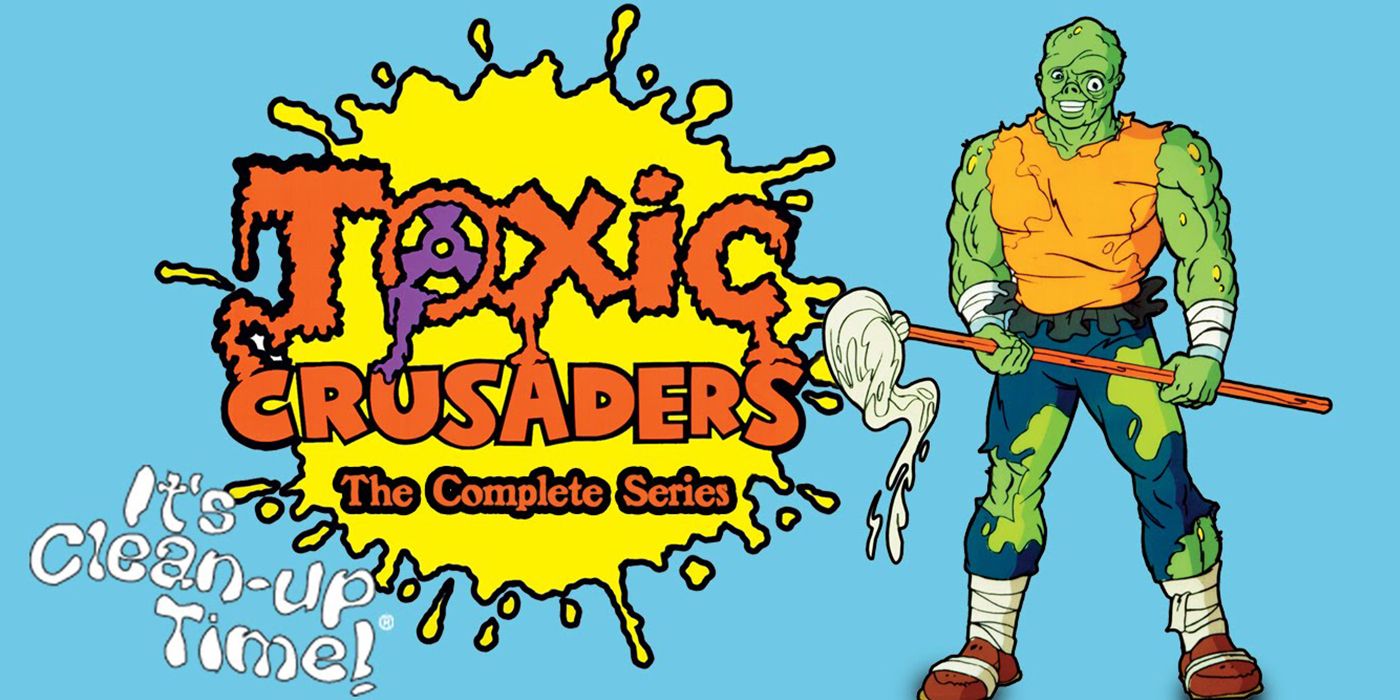Though they no longer air, Saturday morning cartoons used to be a staple in the United States. For generations, the tradition of children waking up early, pouring a bowl of cereal, and plopping down in front of their favorite animated programs wasn’t only a custom, but a lucrative business. Companies such as Hanna-Barbera, DiC, Murakami-Wolf, Filmation, and many more made bank, not just off creating cartoons for major networks, but by selling toys, lunch pails, T-shirts, and more.
As the years went on, the companies began to not only create new cartoons, but search for other franchises which they could adapt into new, hit animated properties. Ultimately, this desperation for content led to some very strange products getting the cartoon treatment. Major movies, TV shows, comic-books, sports teams, and even horror films were adapted into children’s TV shows. In the end, this made for some very weird content that quite possibly impacted many of our childhoods and warped us into the people we are today.
15. The Dukes (Dukes of Hazard)
Up to the fourth season, The Dukes of Hazard was a ratings juggernaut for CBS. However, due to monetary disagreements with the actors playing the lead characters of Bo and Luke (John Schneider and Tom Wopat), the lead characters, were replaced for the fifth season by the poor facsimiles of the originals. Coy and Vance Duke (Byron Cherry and Christopher Mayer) were two other nephews of Jesse who had never been previously mentioned before their introduction. As such, viewership dropped off, and the show scrambled to maintain its fan-base.
Unfortunately, this was also the same time that Hanna-Barbera introduced the animated counterpart to the series, The Dukes, which was now forced to include Coy and Vance rather than the better regarded characters. The show's premise saw the Duke Boys engaged in a worldwide race with Boss Hogg and Sheriff Rosco P. Coltrane for prize money that the good ole’ boys hoped to use to save Uncle Jesse’s farm from foreclosure. As was the norm for animated spinoffs, the cartoon showcased an odd supernatural element and included concepts such as pirates, treasure maps, and Aladdin’s lamp into the mix.
After renegotiating their contracts, Schneider and Wopat’s characters, Bo and Luke immediately replaced their lesser counterparts in the first episode of season 2. Though the voiceover in the opening of season two mentions Bo and Luke, no attention is given to the sudden change of characters in the show.
14. Clerks: The Animated Series
This is the first show on this list that is based on a movie completely inappropriate for children, however, unlike many of the others, this was intentionally made for more mature audiences. Based on Kevin Smith’s 1994 movie Clerks, the cartoon follows the core group of aging slackers including Dante, Randal, Jay, and Silent Bob. Since it was a cartoon and aired on ABC, the duo of Jay and Silent Bob were no longer allowed to sell drugs and were instead relegated to peddling fireworks outside of the Quick Stop. In retrospect, it’s strange that ABC ended up only airing two of the episodes (out of order) because they initially seemed so keen on the series that they gave it a 30 second advertising spot during the 2000 Super Bowl.
Now a staple in shows made by Adult Swim, the show went into some very strange, surreal places. Unusual characters, crazy shifts in animation style, and absurdist humor are just a few of the concepts played with during the series. The best example of this is that, despite only having two episodes, the hilarious "Episode 2: The Clipshow Wherein Dante and Randal are Locked in the Freezer and Remember Some of the Great Moments in Their Lives" utilizes the TV trope of the clip show, wherein fragments of previous episodes are recalled and reused to produce a cheaper episode.
One of the final jokes in the final episode includes a jab that, although written by David Mandel (who bashes Family Guy in the commentary), arguably laid the groundwork for Seth MacFarlane to take several below the belt jabs at Smith for years to come. In Episode 6, Dante and Randal meet their creators and MacFarlane busts into the writers’ room with an incredibly stupid idea while carrying a book he’s written called “How to Write Cartoons”.
13. Godzilla (1978)
Yet another weirdly amazing adaptation brought to us by Hanna-Barbera. While searching for new characters to animate, Joseph Barbera came upon the idea of licensing Godzilla. However, when NBC became interested they insisted on “lightening the story up." Additionally, according to Barbera himself, the network’s standards and practices department insisted on Godzilla not breathing fire towards people or crushing buildings and cars, which is, essentially, everything the character is known for. Faced with building a show now on a name and image alone, he came up with the much hated character of Godzooky, a wacky, wimpy cousin to Godzilla that’s always getting into hijinks.
In the show, Godzooky travels with a crew of scientists onboard the Calico (a hydrofoil boat) and hangs out with his best friend, a kid named Pete. Without knowing the backstory (not mentioned in the show) one would wonder why Godzilla constantly travels close to the ship and remains ever on-call at their slightest whim. According to publicity material at the time, the crew once saved Godzooky from a coral reef, leaving Godzilla forever in their debt. Each episode took an antagonist monster from Godzilla’s back catalog and pitted it against the crew of the ship.
12. It's Punky Brewster
In 1985-1986, Punky Brewster was NBC’s flagship program for Sunday night television. The program centered on a young girl named Punky (Soleil Moon Frye) being raised by an older foster father Henry (George Gaynes). During its initial two season run, NBC’s Production Chief Brandon Tartikoff (who actually named the character Punky after his childhood crush) had such faith in the program that during the first season, a cartoon spinoff was created.
It’s Punky Brewster featured all the show’s main characters and was voiced by the original actors, but introduced a strange magical element not present in the television show. This was largely thanks to the introduction of the character Glomer, a magical Gopher from the city of Chaundoon, who was able to transport Punky and her friends anywhere on the planet as he wished. Introducing magic to the already existing world of Punky Brewster, especially when the show was still thriving on air, was quite a strange decision. The show ran two seasons, with 26 episodes and was canceled along with its live-action counterpart in 1986. The main show however lived on with two more seasons going directly to syndication.
11. The Jackson 5ive/The Osmonds
Yes, they are two separate shows, but they have much in common with one another. Aside from the obvious fact that both center around musical families, both were made by Rankin/Bass as well. This meant that both shows had an incredibly similar animation style as well as content. Moreover, The Jackson 5ive ran from September 11th, 1971 to October 14th, 1972 and The Osmonds ran from September 9th to December 30th, 1972 on ABC. Essentially this means that The Osmonds' show replaced The Jacksons'. The biggest difference between the two would have to be that the Jacksons didn’t contribute their voices to the project, while The Osmonds did.
Voice acting wasn’t the only thing that made The Osmonds show stand out in terms of quality-- their musical performances did as well. During these sections, well-utilized silhouettes were shown performing the songs instead of using typical animation. According to storyboard artist Don Duga, this was done via computers, making the show among the first to employ CGI.
That’s not to say that The Jackson 5ive isn’t without its own merits. The show is famous for helping break down racial barriers in the early 1970s as it was one of the first network depictions of a black family, as well as animation director Bob Balser’s insistence that the show not resort to cheap, stereotypical humor.
10. Harlem Globetrotters/Super Globetrotters
The 1970s and 1980s saw just about every franchise with an inkling of popularity turned into a cartoon, and The Harlem Globetrotters were no different. From 1970-1972 two seasons featuring an animated version of the famed trick-basketball team were produced and aired on CBS. Though the show relied entirely on an incredibly formulaic premise of all issues being able to be reconciled through a game of basketball, it is famous for breaking racial boundaries as the first Saturday morning cartoon to feature a mostly African-American cast of characters. After the show was canceled, several key characters later turned back up on episodes of The New Scooby Doo Movies.
Even being a mostly separate series, Super Globetrotters does feature several carryover characters and voice talents from the original. This new incarnation takes the show into very bizarre territory. The Harlem Globetrotters are now undercover superheroes who again travel the world to challenge villains to a game of basketball in order to undercut their nefarious dealings. They transport themselves into their heroic alter-egos by entering a magic locker and get their orders from an antennae’d basketball in the sky. Some of their abilities include morphing into water, pulling out “gizmos” from their hair, and turning into a human piece of spaghetti.
9. Tabitha and Adam and the Clown Family (Bewitched)
In what has to be the most bizarre attempts to make a beloved series into a cartoon, this is an animated movie continuation of the Bewitched TV show. Though most remember Samantha and Darrin’s daughter Tabitha (who appeared in 116 episodes), far fewer remember their son Adam (who only appeared in 24). The premise of the movie centers on the now teenage siblings traveling to a family member’s house for three weeks, only to discover that their cousins are members of a circus attraction/rock band known as The Clowns. However, an evil warlock has his eye on taking over the circus and cutting The Clowns' career short. It’s up to Tabitha and Adam to assure this doesn’t happen without exposing themselves as magical.
Tabitha and Adam and the Cloud Family aired only once on ABC (12/2/72) and was created by Hanna-Barbera. Though mention is made of their more well-known parents, they are never seen and no one from the live action predecessor lent their voice to the production. Eventually the short-lived series Tabitha was commissioned, and concentrated on the sister’s life while Adam (who is no longer a warlock for no reason) tries to get his sister to turn away from their mother’s witchcraft ways.
8. Mister T
Showcasing a much friendlier version of Mr. T than had been preciously shown in Rocky III and The A-Team, the cartoon centered on a group of traveling gymnasts of which he was the coach. Each episode was bookended with live-action footage of Mr. T addressing the camera. The show started with his giving the audience the low-down on the story about to unfold, and it ended with him discussing the moral that could be taken away from it. The show modeled itself loosely on Scooby Doo, with the team becoming entrenched in a mystery that needed to be solved regardless of where they went.
The show went for 30 episodes and ran on Saturday mornings on NBC from 1983-1986. It’s largely memorable for featuring the early work of many future notables, like Paul Dini (Batman TAS) and Phil LaMarr (MadTV), as well as legends Jack Kirby and Neal Adams. Additionally, the show was among the first licensed by Adult Swim for late night reruns and was a huge inspiration for their current show The Mike Tyson Mysteries.
7. Hammerman
In what is probably the most obscenely narcissistic cartoon to make this list, rapper MC Hammer had his own cartoon in 1991. For a 23 minute show, Hammerman seemed to take every opportunity to showcase as little animation as possible. From the 1:13 minute introduction where Hammer over-explains the protagonists origin, to the live-action opening that follows, in which the real life artist summarizes the cartoon that is about to follow, this is probably the least animated Saturday morning cartoon of all time.
The show’s premise involves a magical pair of talking shoes that allow the wearer to become a superhero. After the aging character “Gramps” becomes too old for the hero-life, he passes the shoes down to a local youth center worker named Stanley. At the end of the show, the magical shoes would talk to the kids and instruct them how to live better lives. Since MC Hammer was notoriously a poppy, clean rapper, the show dealt with various social issues such as graffiti and respecting ones elders.
Though canceled after 13 episodes, the show received three VHS releases. The episodes include "Defeated Graffiti", "Rapoleon", and "Winnie's Winner".
6. New Kids on the Block
In the early '90s, New Kids on the Block were the hottest boy band around. The licensing of their images made million upon millions of dollars, putting their face on everything from Trapper-Keepers to T-shirts, to their own cartoon. Each week, for fourteen weeks, the band introduced a new episode of the series to their legions of followers. Despite their appearing in the intro, the band didn’t actually voice the characters in the show. Occasionally, band members would appear in footage randomly throughout the show as well, this was reportedly due to errors in the animation being turned in and their having no time to fix them.
The show centered on the band touring across the world with their money-hungry manager and the misadventures that happen as a result. Strangely, the character of the manager was actually based on the band’s actual creator and producer, Maurice Starr. After its initial run on ABC, it was picked up by the Disney Channel and reran for the next two years.
5. Little Shop
Follow this: Little Shop is the cartoon adaptation of the 1986 film Little Shop of Horrors, which was an adaptation of the 1982 musical stageplay, which was an adaptation of the 1960s Roger Corman film. Though all of the previous versions of the franchise had utilized a plant horrifically eating people in order to feed, this version of the plant was tamed down and instead preferred foods such as triple pepperoni pizzas with anchovies. As with many early '90s programs, rap was introduced into the show to make it appear hip to the kids. This resulted in the plant (Audrey Jr, referred to as Junior) delivering occasional musical numbers while guiding Seymour through the episode. The other major difference is Seymour and Audrey being aged down to teenagers for the animation.
The show’s central premise revolves around Seymour’s crush on Audrey, with the plant offering to help her fall in love with him should he help it escape. The program aired for thirteen episodes on Fox and was produced by Marvel Productions and Saban. It’s been previously reported that Frank Oz came up with the idea to adapt the TV show into a cartoon after unsuccessfully pitching a prequel of the 1986 film to Warner Brothers.
4. Mork & Mindy/Laverne & Shirley/Fonz Hour
Even with both Mork & Mindy and Laverne & Shirley being spinoffs of Happy Days, as well as all three series having crossover episodes with one another, few could have imagined that they would later be recombined into an hour long cartoon. Rather than a wholly original concept, several of these shows had already been adapted into animation. During seasons 8-10 of Happy Days (1980-82), the show had been spun off into the time-traveling cartoon The Fonz and the Happy Days Gang, while during the 7th-8th seasons (1981-82) of Laverne and Shirley, the property had been adapted into Laverne & Shirley in the Army.
Running for one season from 1982-83, the show was actually two cartoon segments: one of which featured Mork and Mindy as teenagers, and one where the Fonz had become an army mechanic, and essentially joined the already established Laverne and Shirley cartoon. All members of the cast were voiced by their real-life counterparts, except for the role of Shirley (due to actress Cindy Williams quitting the role early into the 8th season of the program).
As with most cartoon spinoffs of the day, the show strangely featured the concept of creepy talking animals. Laverne and Shirley’s characters were constantly upsetting their supervisor, a pig drill sergeant named "Squealy" while The Fonz’s sidekick “Mr. Cool” (who had preciously appeared in TFatHDG) was an anthropomorphic dog with a quite unsettling voice. Though the show went 26 episodes, only 8 segments were produced with Laverne, Shirley, and the Fonz, and were thus reran with new episodes of Mork & Mindy for the rest of the season.
3. Attack of the Killer Tomatoes
Though it does take the name from the original low-budget horror parody, Attack of the Killer Tomatoes is actually an adaptation of the sequel, Return of the Killer Tomatoes. As strange as it was for Fox to make a kids show based on a horror movie spoof, the origins of how it got made are much weirder. One of the highest rated episodes of The Muppet Babies is season three, episode three’s "The Weirdo Zone". In it, Fozzie regales the troop with a story about his time at the FBI (Funny Business Investigation) and the attack of the silly tomatoes. The episode features clips from the original movie as well as several animated tomatoes that Fozzie is forced to deal with. The success of the episode led to the funding of the sequel, and the success of the sequel led to the funding of the cartoon spinoff.
The show was a straight adaptation of RotKT, featuring many of the same characters from the film and features the voice of the legendary John Astin in the role of Dr. Gangreen (he also played Professor Gangreen in the movies). The animated series picks up years after the first film, in a world where tomatoes are now illegal. However, this doesn’t stop Dr. Gangreen’s experiments and he eventually becomes able to make tomatoes that replicate humans. One of these experiments, a female named Tara, becomes disenfranchised with his work, befriends a boy named Chad, and the pair set off on adventures to disrupt the evil misdeeds of Gangreen.
Surprisingly, the first season of the show still holds up. It’s self-referential and often pokes fun at both itself and the franchises low-budget origins. In a hilarious reccurring bit, a character named "The Censor Lady" often breaks the fourth wall during scenes of violence and instructs the characters to remember that this is a children’s cartoon, not the more aggressive movie.
2. The New Adventures of Gilligan/Gilligan's Planet
Though it thrived in syndication, Gilligan’s Island was canceled after only three seasons. Regardless of the show’s floundering ratings, toward the end of the third season the show picked up steam, causing CBS to unofficially green-light a fourth. While the actors were on vacation, studio politics intervened and the show was quietly discarded. However, the S.S. Minnow’s fan base clamored for more, resulting in the 1974 Filmation cartoon The New Adventures of Gilligan. Apart from Ginger (Tina Louise was attempting to distance herself from the character) and Mary Ann (Dawn Wells was doing a traveling play during recording), the entire cast got back together and voiced the animated sitcom. The cartoon depended much on the same type of situational comedy as the live action version, but saw the addition of Gilligan getting his own sidekick, Snubby the monkey.
This however was not enough to quench the thirst of Gilligan diehards and the cast (minus Tina Louis again) reunited for a series of made-for-TV movies which saw the group leave the island, become stranded on it again, and ultimately turn it into a resort.
After the third and final movie aired (starring the Harlem Globetrotters), calls for more Gilligan and company hijinks sprang forward, culminating in 1982’s Gilligan’s Planet. The concept of the show was simple, yet insane: though the Professor was unable to use science to get them home, he was able to build a rocket ship, sending them off into space where they become stranded on a habitable planet. Presumably, Snubby the monkey wasn’t invited onto the rocket because as they land, he is almost immediately replaced by Bumper, a new alien sidekick. The show ran for thirteen episodes.
1. Toxic Crusaders
In a move stranger than turning Attack of the Killer Tomatoes into a children’s cartoon, Troma’s The Toxic Avenger series was adapted into one as well. Though a fine cartoon, this takes the proverbial cake in terms of what source material can be retooled and geared towards children. The three films predating the cartoon featured an incredible amount of violence, sexuality, and gore. Despite this, Murakami-Wolf Productions (behind The Teenage Mutant Ninja Turtles cartoon) teamed up with Troma and turned the famed character Toxie into an environmentally cautious cartoon for 13 episodes. Though the show was heavily toned down from the original movies, it still featured many jokes geared towards adults in the crowd.
In the series, Toxie, Yvonne (his inexplicably hot girlfriend), and his various sidekicks battled antagonists Dr. Killemoff and Czar Zosta who hailed from planet Smogula and were attempting to terraform the planet through pollution. As if this weren’t already strange enough, Toxie’s weapon of choice, a mop, was brought to life and acted as a pet of sorts. The show’s toys featured amazing character designs that captured the imagination of many children struggling to find the show due to its being aired only in syndication. The show didn’t make it past its initial run of episodes, but it left behind some of the most amazing toys ever made as well as tie-in comic books, trading cards, and even a video game.
Though Troma struck a deal with New Line to turn the series into a movie, nothing ever came from it. Toxie's creator (and co-founder of Troma) Lloyd Kaufman claims that this is because the company bought the rights to the cartoon in an effort to get leverage on the owners of TMNT, who they were also making a film with. In the end Troma sued New Line for $50 million for violation of contract.

